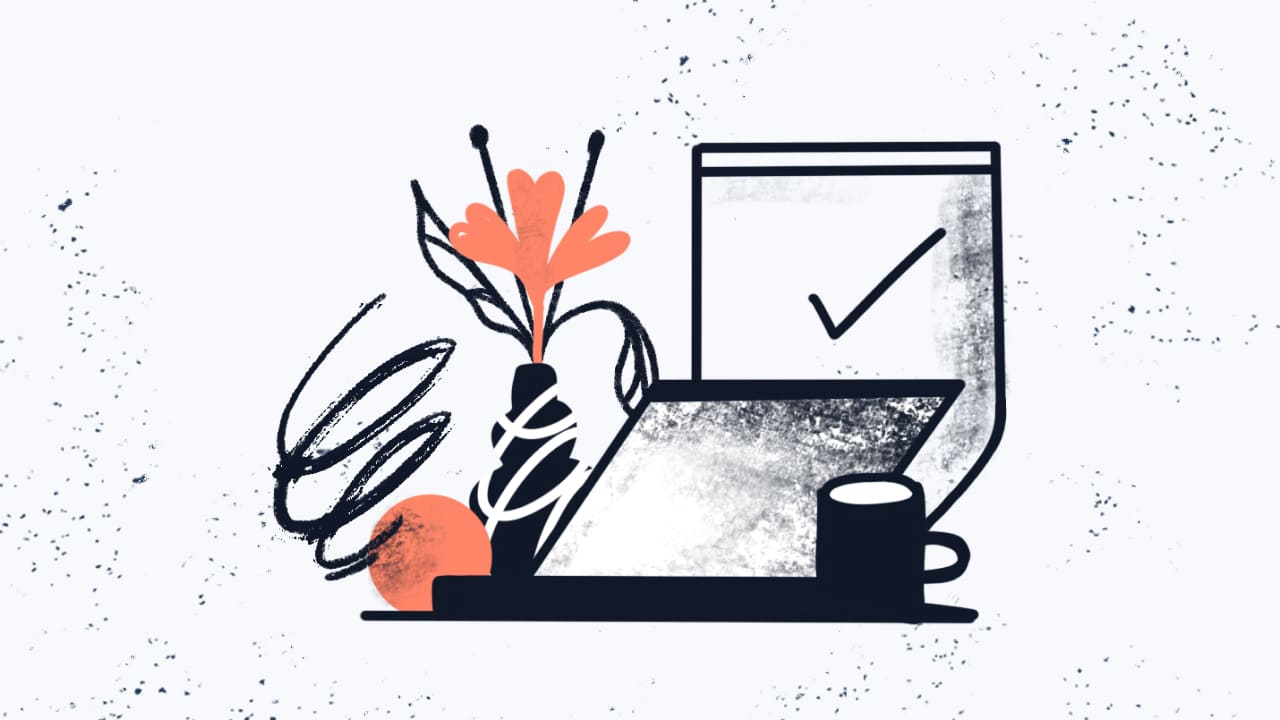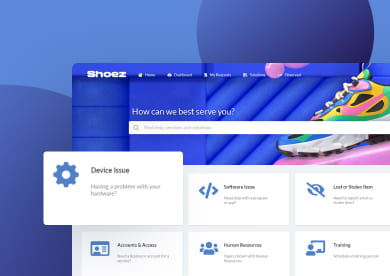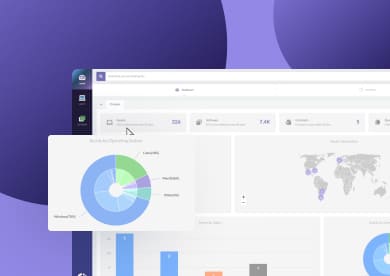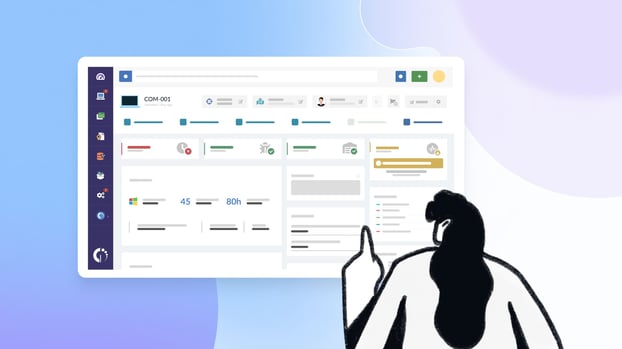Building an IT department from scratch is a major challenge, especially if you're the only person handling everything. You’ll need to set up key processes, choose the right tools, and define the department's structure while keeping daily operations running smoothly. The first 30 days will shape how your IT team functions long-term, so planning ahead is essential.
This guide walks you through the key aspects of setting up an IT department, from defining roles and responsibilities to implementing processes, selecting tools, and establishing policies. By the end, you’ll have a clear roadmap to follow so you can build a functional and scalable IT operation.
What does an IT department REALLY do?
Before defining how to build an IT department, it’s important to clarify its purpose. Many assume IT teams only provide technical support, but their role goes far beyond fixing computers and resetting passwords.
An IT department is responsible for managing the technology that supports your organization’s work. The team lays the foundation for efficient, secure, and scalable operations. Its scope includes handling hardware, software, network infrastructure, and security.
Beyond routine support, the department sets policies for technology use, ensures compliance with industry standards, and tracks IT assets to prevent future complications. The team must also engage in proactive maintenance and strategic planning rather than just fixing issues as they arise.

What do you need to build an IT department from scratch?
Building an IT department involves careful planning across several key areas. In this section, we cover the building blocks you need: establishing a clear team structure, implementing reliable processes, investing in the right tools, and defining essential policies.
Team – Roles and responsibilities
A strong IT department starts with a clear understanding of who is responsible for what. Defining roles upfront helps prevent overlapping duties and confusion later on. Even if you're managing multiple areas on your own at first, planning for specific functions lays the groundwork for future growth.
Consider roles like IT support, systems administration, security analysis, Asset Management, and leadership. Each function contributes its own expertise to build a well-rounded team.
- IT support specialist: Addresses daily technical issues, from software glitches to hardware malfunctions, keeping users productive.
- Systems administrator: Oversees the IT infrastructure, maintaining servers, networks, and cloud services.
- Cybersecurity specialist: Monitors for potential threats and enforces security measures to protect company data.
- IT Asset Manager: Keeps an accurate record of all technology resources, ensuring no device or software falls through the cracks.
- IT Manager/Director: Sets strategy and coordinates projects, aligning IT efforts with business goals. Having an MBA degree can be an asset here, as it strengthens leadership, business strategy, and decision-making skills.
Processes – Structure, workflows, and service standards
Clear processes act as a roadmap for daily operations, preventing tasks from being overlooked or repeated unnecessarily. When workflows are well documented, the team has a reference for handling everything from routine maintenance to unexpected issues.
Without defined processes, you might find tasks slipping through the cracks or recurring issues consuming more time than they should. A structured approach to managing incidents, requests, and equipment flow leads to a more predictable and efficient operation.
- Incident and Request Management: Formal procedures for logging, categorizing, and resolving issues help prioritize work effectively.
- Standard Operating Procedures (SOPs): Detailed guides for routine tasks like updates and backups create consistency across the team.
- Service Level Agreements (SLAs): Established response and resolution targets provide clear expectations, and reduce delays.
- Regular IT audits and compliance reviews: Scheduled checks help catch and correct issues before they escalate.

Tools – Building a streamlined tech stack
Something that happens frequently when starting out is that you encounter a need, search for a quick fix, and either use what you have on hand—like Excel or email—or invest in specialized tools, from project management software to more niche solutions.
Before you know it, your tech stack can become scattered and hard to manage. That’s why we recommend focusing on a few foundational tools before expanding into more specialized software.
Begin with these two core systems:
- IT Asset Management (ITAM) software: Keeping an up-to-date inventory of all your hardware and software is crucial. Without it, you might end up with outdated records or miss critical compliance issues, especially during audits.
- IT Service Management (ITSM) software: A dedicated ticketing system helps centralize support requests and ensures that no issue is overlooked. Relying on email alone can result in lost or delayed responses as the volume of requests increases.
Once you have these in place, you’ll be off to a great start. As your environment grows in complexity, you may need to incorporate more specialized tools to address specific needs. For example:
Additional tools that support a reliable IT environment include:
- Remote management software: Facilitates troubleshooting and maintenance without requiring physical presence, saving time and reducing service interruptions.
- Monitoring and alert systems: Automatically detect issues with networks, servers, or applications. Without monitoring, minor issues can escalate into larger, more disruptive problems.
- Collaboration platforms: Enhance internal communication and documentation, ensuring everyone stays on the same page.
Each of these tools contributes to a smoother workflow and helps prevent the pitfalls of manual management. Just make sure, before you incorporate a new platform or tool, that you understand its purpose and how it integrates with your existing processes. Keep your tech stack manageable and effective, and avoid overlaps and silos.

Policies, security, and compliance
We know that defining policies often gets pushed to the back burner when setting up an IT department. It's easy to see why: it feels like a time-consuming task, and the benefits aren't always immediately obvious. But trust us: robust policies set the boundaries for safe and responsible use of technology within your organization.
Make sure to cover:
- Acceptable use policy: Outlines how employees should use company IT resources, reducing misuse.
- Identity and access management policy: Sets standards for creating and updating strong passwords to reduce the risk of breaches.
- Device and asset tracking policy: Requires accurate recording of all technology assets, preventing losses and unauthorized usage.
- Data security and privacy policy: Details procedures for handling sensitive information, ensuring proper storage and protection.
- Incident response plan: Provides a clear action plan for handling emergencies, minimizing confusion during a crisis.
Inconsistent practices can lead to security vulnerabilities and compliance issues. Establishing a framework of rules and procedures protects your IT environment and makes it easier to onboard and train new team members.

IT department roadmap
With your foundation set, it’s time to execute a 30-day plan that transforms your strategy into a functioning IT department. The following roadmap is divided into three segments, each with specific tasks and milestones designed to keep you on track.
First 10 days
- Conduct an IT audit: Review existing infrastructure, software, hardware, and network configurations. Identify what is currently in place and what needs to be updated.
- Map out all company assets: You'll need this to prevent future discrepancies. As we mentioned, you can use ITAM software to help keep track of devices and software, ensuring you’re not caught off guard during audits.
- Establish a formal communication channel: You can start with an email-based system to centralize IT requests. However, we recommend upgrading to a dedicated help desk platform as soon as possible to manage growing volumes efficiently.
- Define key roles and responsibilities: Document which functions will be handled immediately and what roles might be added later. Even if you are covering multiple areas on your own right now, outlining these responsibilities prepares you for future expansion.
- Draft essential policies: Develop initial versions of acceptable use, password management, and device tracking policies.

Days 11-20
- Implement incident and request management processes: Establish a formal procedure with SLAs for handling IT issues. A structured process helps avoid delays and ensures that critical issues are prioritized.
- Deploy remote management and monitoring tools: Begin using software that can detect and alert the team about potential issues automatically.
- Conduct a compliance and risk audit: Identify areas where current practices might be out of line with industry standards or internal policies. Addressing these issues early helps avoid larger complications down the road.
- Set up an equipment checkout process: Create a workflow for issuing and returning hardware. Proper tracking minimizes losses and ensures accountability.
- Begin drafting standard operating procedures (SOPs): Develop detailed guides for recurring tasks such as software updates, system backups, and routine maintenance. These documents form the backbone of a well-organized IT department.
Days 21-30
- Review and reinforce security policies: Ensure that all team members and users adhere to password and data protection guidelines. A review session can identify gaps and reinforce the importance of security.
- Identify hiring priorities: Based on your initial operations, determine which roles are most critical for expanding your team. Establishing these priorities now will streamline the recruitment process later.
- Set up recurring review processes: Plan regular check-ins and audits to assess the performance of roles, processes, and tools. Continuous evaluation helps adjust practices to meet evolving business needs.
Takeaways
In those early days of setting up your IT department, it's easy to get caught up in trying to do everything at once, but remember that progress happens one step at a time.
Keep these pointers in mind as you move forward:
- Focus on clear processes
- Set realistic milestones
- Keep your tech stack manageable and effective
- Don't overlook IT documentation
- Establish open channels for feedback within your team
Each step you take is a building block toward a resilient IT department. We understand the challenges you might face, and these tips are designed to make the process more manageable. Focus on steady progress and remember: every small improvement contributes to a stronger, more organized IT operation.















